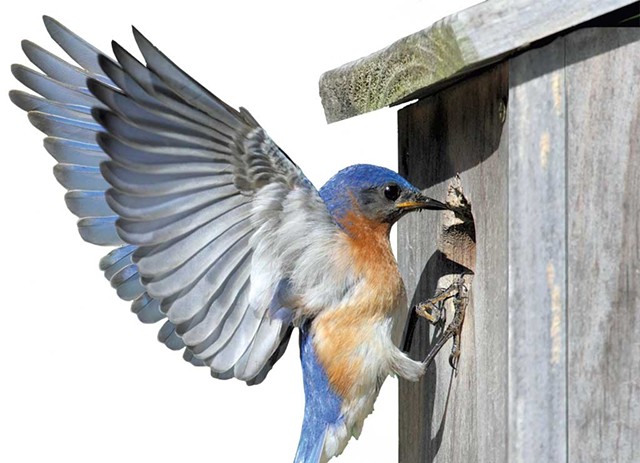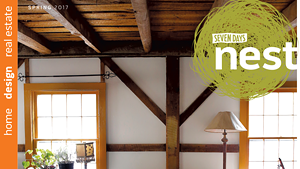
Want to fill your backyard with flutters and sweet melodies? You don't have to be an ornithologist to do so. Even better news: Birds like a yard that's a little messy. So attracting them is easier than you might think. Whether you're moving into a new home this spring or just trying to up your current yard's avian appeal, we've gathered some tips to ensure that your feathered friends flock there.
The No. 1 rule: Don't put up feeders in the spring, particularly if your house is in a rural location or near woods. Feeders can lure in bears along with birds. But there are plenty of other ways to invite winged creatures (butterflies, too!) once the snow melts.
Chip Darmstadt, executive director at the North Branch Nature Center in Montpelier, advises that you first get to know your avian "market." What species tend to populate your area? What kind of habitat do they need? What birds arrive in the spring and summer? Which ones stay all winter long?
A basic bird book or online search might be all you need to figure this out. Don't hesitate to ask your neighbors, too, or create a post about it on Front Porch Forum — you might get a new bird-watching buddy out of it.
Apartment dweller? Even if you have just a deck or porch to work with, you could still attract, say, ruby-throated hummingbirds. Look up the plants they like and pot some. Perhaps you have a place to hang a sugar-water hummingbird feeder — they're small! Just make sure a cat can't reach it, too.
If you have a backyard and can make more permanent changes, Darmstadt says to remember three central things: Birds need food sources, coverage from predators and places to nest.
Go native.
Going local is en vogue with birds. Native, or indigenous, plants "will benefit not just the birds but the whole ecosystem," says Darmstadt. Plants that attract the local insect population will in turn bring birds that like to eat them. He points to viburnums as an example. Many viburnums produce fruit for birds in the winter. Come spring, caterpillars like to eat their leaves; those caterpillars are a food source for song sparrows and yellow warblers.
"Nature does the work for us sometimes," Darmstadt notes. "We can do plantings, but what will grow around here on its own is often what is best for the birds."
Create maximum coverage.
Consider not just the type of plants in your yard but their placement. Darmstadt says that, 20 years ago, the North Branch Nature Center parking lot area had a few shrubs spaced widely apart. Birds stopped through sometimes but didn't stay long. However, as the shrubs matured and filled in, gray catbirds, yellow warblers and song sparrows all began nesting in the dense shrubbery. "Islands of denser vegetation might attract more species than isolated shrubs dotting the landscape," Darmstadt says.
Also, leave the understory. That's the layer of vegetation beneath the main canopy of a wooded area. An understory of vines, smaller trees and shrubs will make ovenbirds, hermit thrushes and warbler species happy.
Darmstadt also advises leaving dead trees where they are, so long as they don't pose a danger to nearby buildings. Woodpeckers, chickadees and nuthatches will build cavities in dead trees and nest in them. "Dead trees are sometimes ugly, but those snags are important for nesting wildlife," he says. "We tend to like things neat and manicured, but birds don't care about that. If we soften the edges and let things grow a little wild, birds will appreciate it." So, consider this a solid excuse to not tidy up your yard too much.
Finally, if your yard has only trees and shrubs that lose their leaves in the winter, plant some evergreens and cedars to provide birds with year-round protection from elements and predators.
Expand the housing market.
If your yard's treescape doesn't offer enough nesting areas, you can add some. Birdhouses give our winged wonders a safe place to rest and raise their young. Black-capped chickadees, house wrens, Carolina wrens and bluebirds are among the species that will nest in boxes. Go to your local gardening store, or a craftsperson, to find birdhouses for specific species. Make sure the entrance hole is the right size!










Comments
Comments are closed.
From 2014-2020, Seven Days allowed readers to comment on all stories posted on our website. While we've appreciated the suggestions and insights, right now Seven Days is prioritizing our core mission — producing high-quality, responsible local journalism — over moderating online debates between readers.
To criticize, correct or praise our reporting, please send us a letter to the editor or send us a tip. We’ll check it out and report the results.
Online comments may return when we have better tech tools for managing them. Thanks for reading.